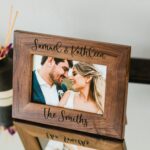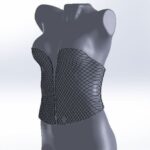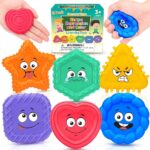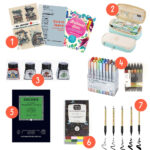I. Understanding Upcycling: What It Is and Why It Matters
II. Choosing the Right Clothing for Your Quilt
III. Step-by-Step Guide to Upcycling Clothing into a Quilt
Understanding Upcycling: What It Is and Why It Matters
So, you might be wondering, what exactly is upcycling? Well, think of it as a creative twist on recycling! Instead of just tossing out old items or simply recycling them, upcycling gives these items a second life, transforming them into something new and useful. It’s a bit like turning a pumpkin into a carriage—except in this case, you might be turning worn-out jeans into a beautifully crafted quilt.
Why Upcycling Matters
Now, let’s dive into why upcycling is not just a fun hobby, but something that truly matters:
- Environmental Impact: Upcycling reduces waste that would otherwise end up in landfills. By repurposing clothing, you’re decreasing the demand for new materials, which helps conserve resources and reduces pollution.
- Creativity and Personal Expression: Upcycling allows you to express your personal style and creativity. Every piece you create tells a story and showcases your unique taste. Plus, it’s a great way to make one-of-a-kind items!
- Cost-Effective: Instead of splurging on new fabrics or items, upcycling lets you use what you already have. It’s a budget-friendly way to create beautiful and functional pieces for your home or wardrobe.
- Support Sustainable Practices: By choosing to upcycle, you’re supporting sustainable fashion practices. This means you’re actively participating in the movement towards more mindful consumption—a wonderful way to contribute to a healthier planet!
The Joy of Upcycling
But let’s not forget the joy that comes with upcycling! There’s something incredibly satisfying about taking something that’s no longer being used and turning it into something beautiful. Whether you’re patching together fabric scraps or repurposing an old sweater, the process can be meditative and rewarding.
Getting Started
If you’re excited about upcycling, you’re in good company! Many people are discovering the joy of taking clothing that no longer fits or is out of style and giving it a fresh purpose. You don’t need to be an expert seamstress to get started; just a bit of creativity and a desire to try something new! Simple projects, like making a quilt from old clothing, can be a fantastic introduction to the world of upcycling.
Conclusion
In a world where fast fashion dominates, upcycling stands out as a sustainable and creative alternative. It allows us to take control of our consumption habits while doing something good for the environment. As you embark on your upcycling journey, remember that it’s all about creativity and having fun. So gather your old clothing, roll up your sleeves, and let your imagination run wild!
Choosing the Right Clothing for Your Quilt
When it comes to creating a quilt from upcycled clothing, picking the right pieces is crucial to achieving not only a beautiful quilt but also one that tells a story. Think of your quilt as a canvas where each fabric tells a tale of its past life. So, how do you choose the perfect clothing items for your quilt? Let’s dive into the delightful world of fabric selection!
1. Assess the Fabric Types
First things first, consider the fabric type. Not all materials are created equal when it comes to quilting. Here are some popular choices:
- Cotton: This is a quilter’s best friend! Cotton is durable, easy to sew, and comes in a variety of colors and patterns.
- Flannel: Perfect for cozy quilts, flannel adds warmth and a soft touch, making it a great choice for chilly nights.
- Denim: If you’re going for a rustic look, denim is a fantastic option. Just keep in mind that it can be a bit heavier!
- Jersey: For a stretchy and comfy quilt, consider using old t-shirts. They’re soft and can give your quilt a casual vibe.
2. Consider Color and Pattern
Your quilt will be a patchwork of memories, so think about the colors and patterns that resonate with you. Here are some tips:
- Mix and Match: Don’t be afraid to combine different colors and patterns. A vibrant quilt can be a joyful tribute to the clothing’s past.
- Choose a Theme: Whether it’s a color scheme (like pastels or bold neons) or a pattern theme (like florals or geometrics), having a cohesive look can elevate your quilt.
- Personal Sentiment: Incorporate clothing that holds sentimental value—maybe that button-up from a special occasion or those jeans you wore on a memorable trip. These pieces will add unique flair and personal connection to your quilt.
3. Check for Condition
Before you toss any piece of clothing into your quilt pile, check its condition. Look for:
- Wear and Tear: While some wear can add character, avoid heavily damaged items unless you plan to cut around the defects.
- Stains: If the stains don’t come out with washing, it might be best to leave that piece out.
- Fading: Fabrics that are significantly faded may not add the visual interest you’re aiming for.
4. Gather Your Inspiration
Finally, don’t hesitate to gather inspiration from other quilters! Social media platforms like Instagram and Pinterest are filled with upcycling ideas. Seeing how others have combined fabrics can spark your creativity and help you visualize your vision for the quilt.
Choosing the right clothing for your quilt is all about balancing practicality with creativity. So, dive into your closet with an open heart and mind, and let your quilt-making journey begin!
Step-by-Step Guide to Upcycling Clothing into a Quilt
So, you’re ready to dive into the world of upcycling and transform some of that beloved clothing into a cozy quilt? Fantastic choice! Not only is this a great way to breathe new life into old fabrics, but it also creates something uniquely yours. Let’s roll up those sleeves and get started with this step-by-step guide!
1. Gather Your Materials
Before you jump in, let’s make sure you have everything you need:
- Old Clothing: Think about t-shirts, jeans, or any fabric that holds a special memory.
- Cutting Tools: A good pair of fabric scissors or a rotary cutter will make your life easier.
- Measuring Tape: Accurate measurements are key for a well-fitted quilt.
- Quilt Batting: This is the fluffy layer that gives your quilt warmth.
- Backing Fabric: You’ll need a nice fabric for the back of your quilt, which could be another piece of upcycled fabric!
- Sewing Machine: A machine will speed things up, but hand sewing works too if you’re feeling patient.
- Quality Thread: Choose a strong thread that matches or contrasts nicely with your fabrics.
2. Plan Your Design
Now comes the fun part—designing your quilt! You can go for a traditional patchwork look or create more intricate patterns. Here are some tips:
- Layout: Lay out your pieces on the floor or a large table to visualize how they’ll fit together.
- Color Scheme: Consider using colors that complement each other, or go wild with contrasting hues for a funky vibe!
- Theme: You might want to create sections based on colors, textures, or even sentimental value.
3. Cutting the Clothing
Once you’ve settled on a design, it’s time to cut your clothing into squares or rectangles. Here’s how:
- Lay your clothing flat and smooth out any wrinkles.
- Using your measuring tape, mark the dimensions of your pieces on the fabric.
- Cut carefully to avoid fraying. Remember, it’s best to cut slightly larger and trim down to size later!
4. Assemble the Quilt Top
With all your pieces cut, it’s time to sew them together! Here’s how:
- Start by joining pieces together in rows, sewing along the edges with a ¼ inch seam allowance.
- Press the seams open with an iron for a flat finish.
- Once your rows are complete, join them together to form the quilt top.
5. Layer and Quilt
Now, let’s add that cozy layer:
- Lay out your backing fabric, right side down.
- Place the batting on top, and finally, add your quilt top right side up.
- Pin all layers together to keep them from shifting.
6. Final Touches
Finally, it’s time for the finishing touches:
- Sew around the edges, leaving a small opening for turning.
- Turn your quilt right side out, then sew up the opening.
- Quilt through all layers to secure everything—this can be simple lines or fun patterns!
And there you have it! Your very own upcycled quilt, filled with memories and love. Enjoy wrapping yourself in it, or gift it to someone special. Happy quilting!






Comments